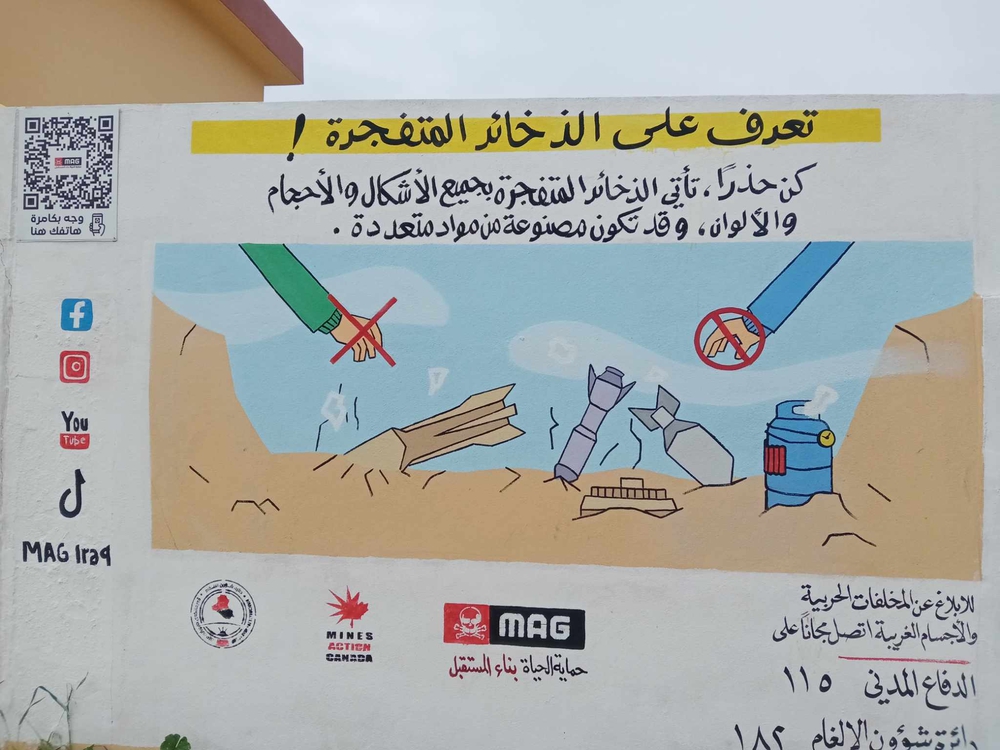Every year, World Refugee Day (20th June) focuses global attention on the plight of those fleeing conflict, persecution, violence, and human rights violations.
As conflicts continue to intensify in Gaza, Myanmar, Ukraine and many other places around the world, more and more men, women and families are being forced out of their homes every day.
At the end of 2023, an estimated 117.3 million people worldwide were forcibly displaced. Based on operational data, The UN Refugee Agency has estimated that this figure has already risen to 120 million.
As we have seen in South East Asia, the Middle East and West Africa, in particular, communities often remain displaced for many decades after the fighting ends. Their homes, hospitals, crops and waterways littered with landmines and explosive remnants of war. Too many people never return home.
Displaced populations are particularly vulnerable as they lack local knowledge about the threat of explosive ordnance in the areas they’ve moved to and, while looking for work, are sometimes forced to take risks to survive.
This is why the delivery of digital risk education, providing guidance on staying safe, is crucial.
In many situations, including during armed conflicts or where access is difficult, it is the fastest and most important way that MAG can help save lives.
Read about a few ways MAG is reaching displaced communities affected by conflicts and their consequences:
Ukraine
The conflict in Ukraine has led to a massive rise in the use of landmines and other explosive ordnance, putting the population at high risk. The devastating consequences are likely to last long after the conflict has ended.
Over the last few months, MAG, in partnership with Tetra Tech, has developed three 45-second animated videos featuring a deminer character called Rocky the Racoon.
The animations, which are targeted at children, focus on how to recognise areas which might be contaminated by explosive devices and how to sound an alarm. They also teach people safe behaviours in case they come across dangerous explosive items.
The animations, which were funded by the US, were broadcast on various Ukrainian TV channels, including ICTV2, STB, and New Channel, as well as on the metro.
The campaign is ongoing and has reached over two million people so far.
Watch one of the animations with Rocky the Racoon:
.
.
Iraq
Iraq hosts around 300,000 refugees and asylum seekers. It is estimated that there are over 260,000 Syrian refugees living predominantly in the Kurdistan Region of Iraq. Over 60% of them live in urban areas.
In order to reach as many people as possible, MAG Iraq has launched a street art project in multiple areas affected by contamination. Teams have created murals, raising awareness of the specific type of explosive ordnance in the area. The artwork contains a QR code, which takes people directly to MAG Iraq's Facebook page, where they can learn more about our safety guidance.
New innovative and interactive approaches to risk education are crucial for engaging with people of all ages.

To accompany the street art project, MAG has also launched a new campaign on Facebook, warning people of the dangers of landmines, cluster munitions, improvised explosive devices, and unexploded ordnance in areas that were once occupied by ISIS fighters. Over one million Iraqis remain internally displaced by ISIS's insurgency.
Titled Cohesion and Solidarity in the Battle Against Cluster Munitions and Hazardous Ordnance in Iraq and funded by Mine Action Canada, the campaign delves into the stories of those who have lost loved ones in explosive ordnance accidents after returning home. The videos reiterate MAG’s safety advice that can help save lives in areas that are still plagued by the deadly legacy of war.
Social media enables us to target large numbers of people in a specific area and overcome obstacles posed by security, geography and complex operating environments that limit the delivery of face-to-face risk education.
So far, the campaign has been viewed on Facebook over 700,000 times.





